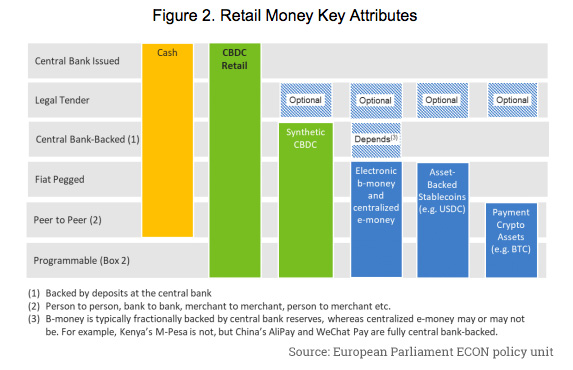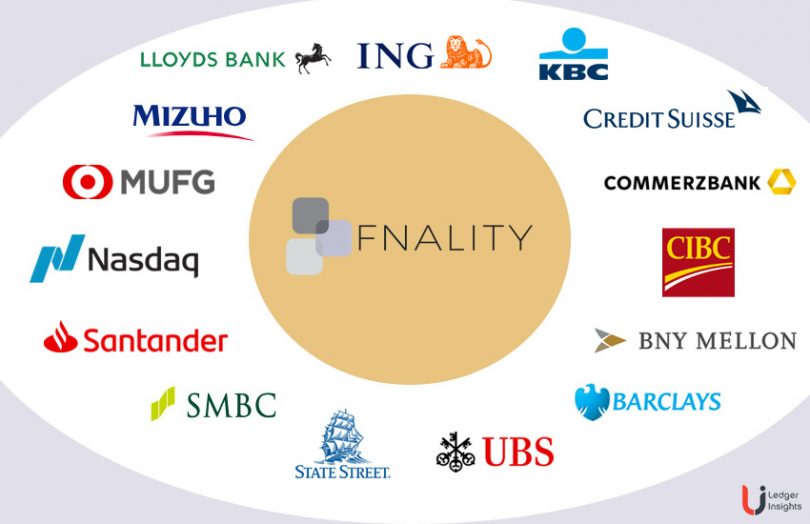Yesterday the Financial Stability Board (FSB) published its G20 recommendations on global stablecoins (GSC), which suggested new standards for global regulations be set by mid-2022. The paper says those regulations could also apply to wholesale stablecoins. Fnality, the institutional payment system backed by 14 global banks and Nasdaq, is due to launch next year, subject to central bank go ahead. The company’s solution, formerly called the Utility Settlement Coin, aims to provide bank to bank payments using tokens backed by central bank deposits. And JP Morgan also has its JPM Coin, which tokenizes bank balances.
The question is whether Fnality’s solution or the JPM Coin are wholesale global stablecoins or just payment systems and hence whether pending legislation might cause delays. Or in the case of Fnality, whether it’s a synthetic CBDC.
Fnality doesn’t position itself as a stablecoin as demonstrated by Fnality’s response to Ledger Insights: “Our legal analysis indicates that we are a payments system and our conversations with the overseers point in the direction that they view us in the same way. Although Fnality uses DLT we are not creating a crypto-asset, such as a stablecoin, and we expect to be regulated as a Financial Market Infrastructure under existing rules.”
The FSB’s report considers stablecoins as a specific category of crypto-assets that tie value to assets such as sovereign currencies. So that begs the question, what is a crypto-asset? The FSB defined it in another report last year as: “a type of private asset that depends primarily on cryptography and distributed ledger or similar technology as part of their perceived or inherent value.” That’s a broad definition. In a December 2019 report, the BIS acknowledged that “there is no single or generally-recognised definition of crypto-assets at present.”
But the real question is, whether regulators think Fnality or JPM Coin are stablecoins?
Let’s look at the Committee on Payments and Market Infrastructures (CPMI), the standards organization for the bodies that will regulate both solutions. The CPMI published a report on enhancing cross-border payments. It outlined building blocks to improve cross-border payments, including global stablecoins, where it referenced three solutions: Facebook’s Libra, JPM Coin and Fnality.
In May, the European Central Bank (ECB) published its report on global stablecoins. The footnotes talk about the Tether stablecoin, which it says “is almost entirely limited to the crypto-asset market. Other examples include Fnality and JPM Coin. Facebook recently announced that it was launching a new stablecoin named Libra in cooperation with a group of multinational corporations.”
The takeaway is the ECB considers Fnality and JPM Coin as stablecoins and seems to associate crypto-assets with cryptocurrencies. In contrast, the FSB considers cryptocurrencies as a subset of crypto-assets.
Synthetic CBDC
Apart from stablecoins, there are also synthetic CBDCs (sCBDC). That’s where the cash backing the token is held at a central bank. There’s a strong argument that Fnality will be a synthetic CBDC.
In this case, a stablecoin rebuttal is proposed by blockchain firm R3 when it responded to the FSBs consultations on stablecoins. It wrote, “we do not view synthetic CBDC as a form of GSC. We would characterise synthetic CBDC as CBDC that is issued by commercial banks as part of a recognised delivery of a CBDC solution to the public that has the official agreement of the domestic central bank and is regulated as such.”
The European parliament’s ECON policy unit had some thoughts on the topic: “sCBDC differs from other forms of money in two basic ways. First, it is a liability of private firms—the sCBDC issuers—rather than of the central bank. Second, sCBDC is backed with central bank reserves, and thus differs from privately issued digital currencies such as e-money, stablecoins, or crypto-assets that are not backed by any asset.”
Its taxonomy below seems to differentiate sCBDC from stabelcoins, but other text appears to treat an sCBDC as a type of licensed stablecoin. “Such stablecoin issuers and PSPs would have accounts at the central bank,” it writes.

We looked at the Token Taxonomy Framework for guidance, but in this case it wasn’t a help.
Any wholesale token linked to fiat currency could be based on central bank deposits, given it is banks that currently have access to central bank accounts. So that begs the question, if not Fnality, what sort of solution was the FSB considering when it referred to wholesale global stablecoins? Perhaps the JPM Coin?






